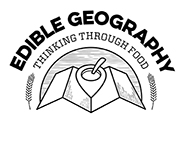VIDEO: Made for the New York Public Library’s Mapping New York’s Shorelines exhibition, this video combines historic maps with a Google Earth flyover to reveal the outline of the eighteenth-century Rutgers Farm beneath today’s East Village.
Non-profit, for-profit, or community-supported? Allotment, front lawn, traffic island, or vacant lot? Distributed, vertical, or rooftop? Jobs, education, health, taste, or environmental sustainability? Farmer’s markets, veg box, or food co-ops?
Even as urban agriculture grows in popularity across the developed world, it can take quite different forms, at different scales, using different business models, and in pursuit of different goals, within the same neighbourhood of the same city. That’s understandable – and probably necessary – given the complexities of urban governance, land ownership, personal preferences, soil quality, and local economics.
But what would a citywide plan for urban agriculture look like? And is it even possible to achieve the benefits of designing at that scale – the leverage to pass laws and change zoning, for example, or the cost efficiencies of shared resources, processing facilities, and distribution networks – without losing the flexibility to create local solutions that meet local needs?
The Design Trust for Public Space is trying to answer these questions on the way to creating the first citywide plan for urban agriculture in New York, and they’re looking to hire two Project Fellows to conduct some of the research with them. The job descriptions are worth reading for inspiration purposes alone: one of these Fellows will be tasked with developing metrics that capture everything from sales, multipliers, and costs to public health, youth empowerment, and community building benefits, while the other will be developing a set of urban agriculture typologies, complete with case studies and an assessment of how each model works in the context of varying goals, available inputs, and audience.
It’s actually hard to imagine more useful questions to tackle, if you want to take urban agriculture from bourgeois hobby to viable food system.
Excitingly, the Fellows will also be working with City officials and Added Value, one of New York’s existing (and most successful) urban farms, in order to analyse how urban agriculture could fit within New York City’s food and waste systems, as well as map and evaluate City-owned land that could potentially be used for farming.
The anticipated duration of the project is twelve months, beginning in March 2010, and applications are due February 3rd. You can find all the details online here.
Discover more from Edible Geography
Subscribe to get the latest posts to your email.

